-
 Bitcoin
Bitcoin $108,489.6704
1.13% -
 Ethereum
Ethereum $2,502.0528
2.92% -
 Tether USDt
Tether USDt $1.0002
0.00% -
 XRP
XRP $2.1941
0.51% -
 BNB
BNB $655.3375
1.00% -
 Solana
Solana $151.5977
1.27% -
 USDC
USDC $0.9999
0.00% -
 TRON
TRON $0.2768
0.32% -
 Dogecoin
Dogecoin $0.1676
2.86% -
 Cardano
Cardano $0.5675
0.98% -
 Hyperliquid
Hyperliquid $40.6109
7.48% -
 Bitcoin Cash
Bitcoin Cash $500.7746
2.09% -
 Sui
Sui $2.8328
2.03% -
 Chainlink
Chainlink $13.4452
1.26% -
 UNUS SED LEO
UNUS SED LEO $9.1623
0.39% -
 Avalanche
Avalanche $18.2267
2.24% -
 Stellar
Stellar $0.2382
0.00% -
 Toncoin
Toncoin $2.8885
1.68% -
 Shiba Inu
Shiba Inu $0.0...01159
0.91% -
 Litecoin
Litecoin $87.1827
0.88% -
 Hedera
Hedera $0.1511
2.90% -
 Monero
Monero $315.4992
-0.59% -
 Polkadot
Polkadot $3.4663
2.34% -
 Bitget Token
Bitget Token $4.6118
-0.65% -
 Dai
Dai $1.0000
-0.01% -
 Ethena USDe
Ethena USDe $1.0003
0.02% -
 Uniswap
Uniswap $7.2989
4.69% -
 Pepe
Pepe $0.0...01003
5.73% -
 Aave
Aave $275.5616
7.15% -
 Pi
Pi $0.5181
-2.49%
How to identify the breakout of the falling relay platform?
A falling relay platform in crypto trading is a bearish pattern with consolidation zones during a downtrend, signaling temporary pauses before further declines.
Jun 30, 2025 at 03:35 pm
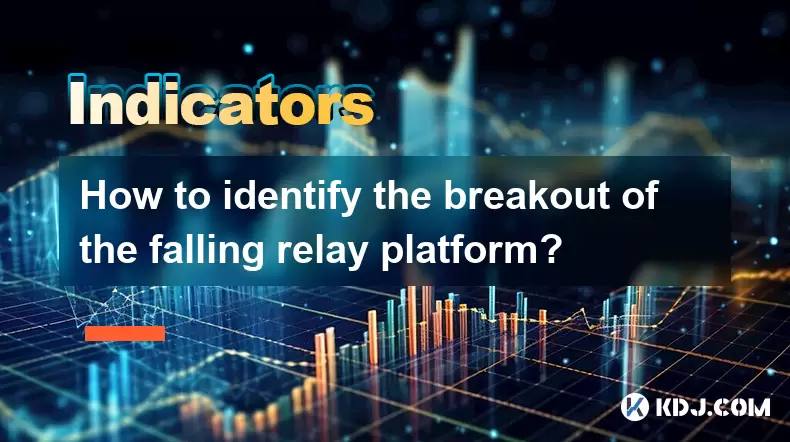
What is a Falling Relay Platform in Cryptocurrency Trading?
In cryptocurrency trading, a falling relay platform refers to a specific price pattern observed on candlestick charts. It typically manifests as a series of consolidation zones during a downtrend, where the price temporarily stabilizes before continuing its downward movement. These platforms are often seen as areas where large institutional traders or whales "take a break" from selling pressure, allowing retail traders to react. Identifying these patterns is crucial for traders who aim to anticipate further declines or potential reversals.
The term "falling" indicates that the overall trend remains bearish, while "relay" suggests that the price action pauses at certain levels before resuming its descent. The identification of this structure helps traders manage risk and optimize entry points.
Key Characteristics of a Falling Relay Platform
Understanding the key characteristics of a falling relay platform can help traders distinguish it from other types of consolidation patterns:
- Multiple Consolidation Zones: A true falling relay platform will show two or more distinct consolidation phases within a broader downtrend.
- Lower Highs and Lower Lows: Each subsequent consolidation phase should form lower highs and lower lows compared to the previous one.
- Volume Patterns: During the consolidation periods, volume usually decreases, indicating reduced selling pressure. However, when the price breaks below a support level, volume often spikes again.
- Time Intervals Between Platforms: There is typically a consistent time interval between each consolidation zone, suggesting a deliberate market structure rather than random price movement.
Recognizing these features enables traders to filter out false signals and avoid premature entries into short trades.
How to Visually Identify a Falling Relay Platform on Charts
Visual identification plays a central role in recognizing a falling relay platform. Traders must closely examine their charts using tools like horizontal lines and trendlines:
- Draw Support and Resistance Levels: Start by identifying the first consolidation zone and drawing a horizontal support and resistance line around it.
- Observe Repetition: Look for a second consolidation area that forms after a drop in price. This new zone should also have clearly defined boundaries.
- Connect the Dots: Use diagonal trendlines to connect the tops and bottoms of each consolidation zone. If they are parallel or converge slightly, the structure is likely a falling relay platform.
- Check for Volume Confirmation: Overlay volume indicators to confirm whether the pattern aligns with typical volume behavior—low during consolidation, higher during breakdowns.
Using platforms like TradingView or Binance's native charting tools, traders can annotate these patterns directly on their screens for better clarity.
Confirming the Breakout of a Falling Relay Platform
Once a falling relay platform has been identified, the next critical step is confirming the breakout. A breakout occurs when the price decisively moves below the final support level of the last consolidation zone:
- Price Action Confirmation: Wait for a strong bearish candlestick that closes below the support level. Avoid reacting to wicks or fakeouts.
- Volume Surge: A valid breakout is often accompanied by a spike in trading volume, signaling increased selling interest.
- Wait for Retest: Sometimes, after breaking down, the price may retest the broken support as new resistance. Observing how the price reacts during this retest can provide additional confirmation.
- Use Moving Averages or Indicators: Applying moving averages (e.g., 20 EMA) or oscillators like RSI can help assess momentum and validate the strength of the breakout.
Traders should not rush into trades based solely on visual patterns. Instead, waiting for multiple confirmations increases the probability of successful trades.
Common Mistakes When Identifying Falling Relay Platform Breakouts
Many traders fall into traps when trying to identify breakouts from falling relay platforms, leading to costly errors:
- Premature Entry: Jumping into a short position before the breakout is confirmed can result in losses if the price rebounds.
- Ignoring Volume Signals: Failing to check volume during and after the breakout can lead to false assumptions about the strength of the move.
- Mislabeling Consolidation Zones: Not all consolidations during a downtrend qualify as relay platforms. Some are simply temporary pauses without structural repetition.
- Overtrading Based on Visual Patterns Alone: Relying only on chart patterns without considering broader market context or news events can be risky.
Avoiding these mistakes requires discipline, patience, and a structured approach to technical analysis.
Using Falling Relay Platform Breakouts in Your Trading Strategy
To incorporate falling relay platform breakouts into a trading strategy effectively, traders should follow a systematic plan:
- Define Clear Rules: Establish objective criteria for what constitutes a valid falling relay platform and breakout. Stick to these rules consistently.
- Set Stop-Loss and Take-Profit Levels: Place stop-loss orders above the most recent consolidation zone to limit downside risk. Set realistic take-profit targets based on prior price swings or Fibonacci extensions.
- Combine with Other Tools: Enhance reliability by combining this pattern with other technical indicators such as MACD, RSI divergence, or Fibonacci retracement levels.
- Backtest Before Live Trading: Test your strategy on historical data to see how effective it is in different market conditions before risking real capital.
By integrating this pattern into a broader trading framework, traders can increase their edge in volatile crypto markets.
Frequently Asked Questions (FAQ)
Q: Can falling relay platforms appear in uptrends?
A: While falling relay platforms are primarily associated with downtrends, similar structures known as "rising relay platforms" can occur in uptrends. These consist of repeated consolidation zones during an upward move.
Q: Are falling relay platforms reliable across all timeframes?
A: Falling relay platforms can be found on various timeframes, but they tend to be more reliable on higher timeframes such as the 4-hour or daily charts due to reduced noise and stronger institutional participation.
Q: Is it possible for a falling relay platform to reverse into a bullish trend?
A: Yes, although rare, a falling relay platform can sometimes signal exhaustion of the downtrend. If the price breaks above the upper boundary of the final consolidation zone with strong volume, it could indicate a potential reversal.
Q: Should I always wait for a retest after a breakout?
A: Waiting for a retest is optional and depends on your trading style. Aggressive traders may enter immediately after the breakout, while conservative traders prefer to wait for confirmation via a retest or candlestick close.
Disclaimer:info@kdj.com
The information provided is not trading advice. kdj.com does not assume any responsibility for any investments made based on the information provided in this article. Cryptocurrencies are highly volatile and it is highly recommended that you invest with caution after thorough research!
If you believe that the content used on this website infringes your copyright, please contact us immediately (info@kdj.com) and we will delete it promptly.
- Bitcoin's Bumpy Ride: Profit-Taking Slows Momentum, What's Next?
- 2025-06-30 20:30:11
- Bitcoin's Price Stall: Decoding the ETF Inflows Mystery
- 2025-06-30 20:30:11
- Ripple XRP, Bitcoin, and Solaris Presale: What's the Buzz?
- 2025-06-30 18:50:11
- SpaceX, Mirror Tokens, and Investors: A Wild Ride to the Future?
- 2025-06-30 19:10:22
- Arbitrum (ARB) and Robinhood: Partnership Rumors Fuel Price Surge to $0.4289?
- 2025-06-30 19:10:22
- Jasmy Coin, Bitcoin, and the Rise of Solaris Presale: What's the Buzz?
- 2025-06-30 18:30:12
Related knowledge
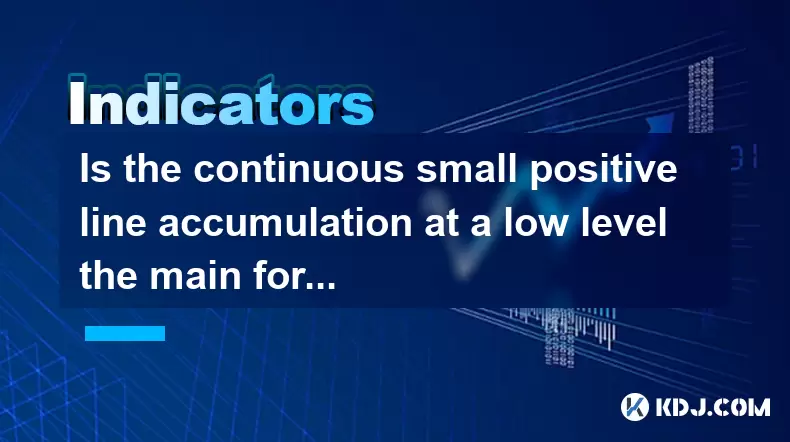
Is the continuous small positive line accumulation at a low level the main force to build a position?
Jun 30,2025 at 08:15pm
Understanding the Concept of Continuous Small Positive Line AccumulationIn cryptocurrency trading, continuous small positive line accumulation refers to a pattern where an asset experiences multiple consecutive candlesticks or bars that close higher than they open, but with relatively low volume and minimal price movement. This phenomenon is often obser...
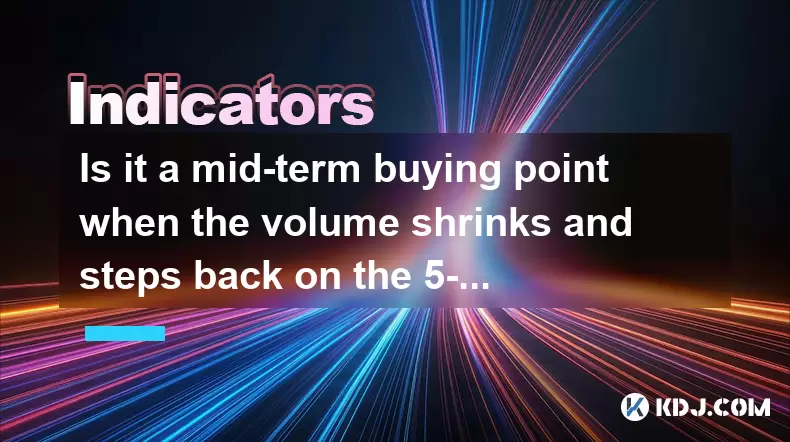
Is it a mid-term buying point when the volume shrinks and steps back on the 5-week line in the upward trend?
Jun 30,2025 at 07:49pm
Understanding the 5-Week Moving Average in Cryptocurrency TradingIn cryptocurrency trading, technical indicators such as the 5-week moving average are widely used to assess long-term trends. This indicator smooths out price volatility over a five-week period and provides traders with a clearer picture of the direction in which an asset is moving. When a...
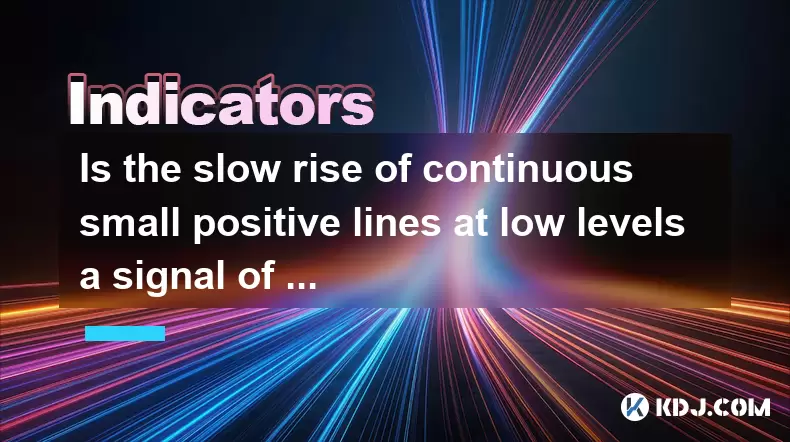
Is the slow rise of continuous small positive lines at low levels a signal of the main force absorbing funds?
Jun 30,2025 at 07:00pm
Understanding the Concept of Continuous Small Positive Lines in CryptocurrencyIn the realm of cryptocurrency trading, price patterns are often analyzed to predict future movements. One such pattern is the slow rise of continuous small positive lines at low levels, which refers to a situation where an asset’s price gradually increases over time through a...
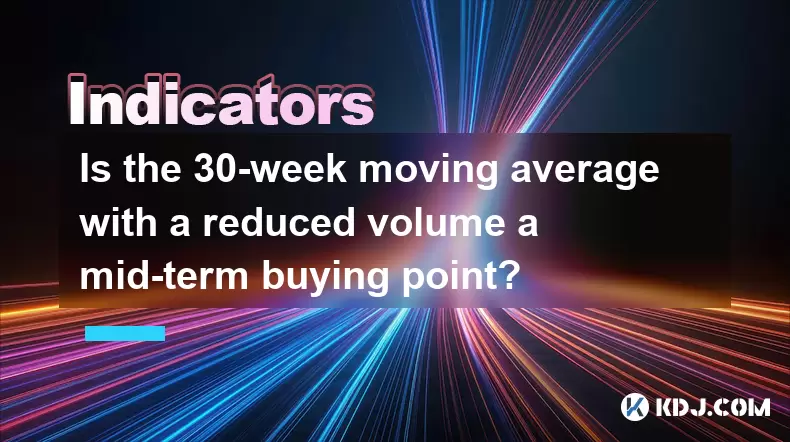
Is the 30-week moving average with a reduced volume a mid-term buying point?
Jun 30,2025 at 08:01pm
Understanding the 30-Week Moving Average in Cryptocurrency TradingThe 30-week moving average is a popular technical indicator used by traders to assess long-term trends in cryptocurrency markets. Unlike shorter timeframes such as the 50-day or 200-day moving averages, the 30-week version smooths out price data over a longer duration, reducing noise and ...
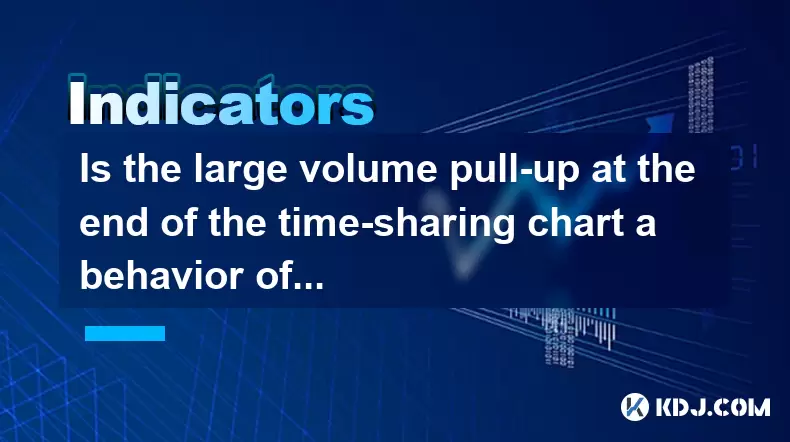
Is the large volume pull-up at the end of the time-sharing chart a behavior of inducing more?
Jun 30,2025 at 05:56pm
Understanding the Time-Sharing Chart in Cryptocurrency TradingIn the world of cryptocurrency trading, time-sharing charts are essential tools used by traders to analyze price movements within a specific timeframe. These charts typically display data in intervals such as 1-minute, 5-minute, or 15-minute segments, offering granular insights into how price...
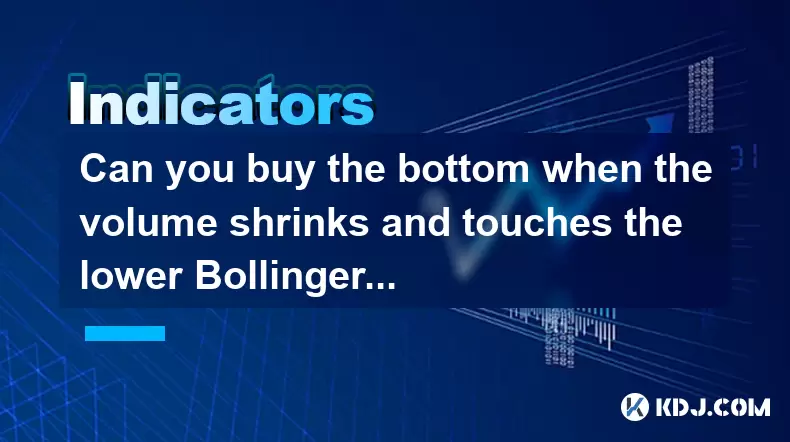
Can you buy the bottom when the volume shrinks and touches the lower Bollinger band during sideways fluctuations?
Jun 30,2025 at 08:08pm
Understanding the Bollinger Band and Volume RelationshipWhen analyzing cryptocurrency price charts, Bollinger Bands are commonly used by traders to identify potential overbought or oversold conditions. The indicator consists of a middle band (usually a 20-period moving average) and two outer bands that represent standard deviations above and below the m...

Is the continuous small positive line accumulation at a low level the main force to build a position?
Jun 30,2025 at 08:15pm
Understanding the Concept of Continuous Small Positive Line AccumulationIn cryptocurrency trading, continuous small positive line accumulation refers to a pattern where an asset experiences multiple consecutive candlesticks or bars that close higher than they open, but with relatively low volume and minimal price movement. This phenomenon is often obser...

Is it a mid-term buying point when the volume shrinks and steps back on the 5-week line in the upward trend?
Jun 30,2025 at 07:49pm
Understanding the 5-Week Moving Average in Cryptocurrency TradingIn cryptocurrency trading, technical indicators such as the 5-week moving average are widely used to assess long-term trends. This indicator smooths out price volatility over a five-week period and provides traders with a clearer picture of the direction in which an asset is moving. When a...

Is the slow rise of continuous small positive lines at low levels a signal of the main force absorbing funds?
Jun 30,2025 at 07:00pm
Understanding the Concept of Continuous Small Positive Lines in CryptocurrencyIn the realm of cryptocurrency trading, price patterns are often analyzed to predict future movements. One such pattern is the slow rise of continuous small positive lines at low levels, which refers to a situation where an asset’s price gradually increases over time through a...

Is the 30-week moving average with a reduced volume a mid-term buying point?
Jun 30,2025 at 08:01pm
Understanding the 30-Week Moving Average in Cryptocurrency TradingThe 30-week moving average is a popular technical indicator used by traders to assess long-term trends in cryptocurrency markets. Unlike shorter timeframes such as the 50-day or 200-day moving averages, the 30-week version smooths out price data over a longer duration, reducing noise and ...

Is the large volume pull-up at the end of the time-sharing chart a behavior of inducing more?
Jun 30,2025 at 05:56pm
Understanding the Time-Sharing Chart in Cryptocurrency TradingIn the world of cryptocurrency trading, time-sharing charts are essential tools used by traders to analyze price movements within a specific timeframe. These charts typically display data in intervals such as 1-minute, 5-minute, or 15-minute segments, offering granular insights into how price...

Can you buy the bottom when the volume shrinks and touches the lower Bollinger band during sideways fluctuations?
Jun 30,2025 at 08:08pm
Understanding the Bollinger Band and Volume RelationshipWhen analyzing cryptocurrency price charts, Bollinger Bands are commonly used by traders to identify potential overbought or oversold conditions. The indicator consists of a middle band (usually a 20-period moving average) and two outer bands that represent standard deviations above and below the m...
See all articles

























































































